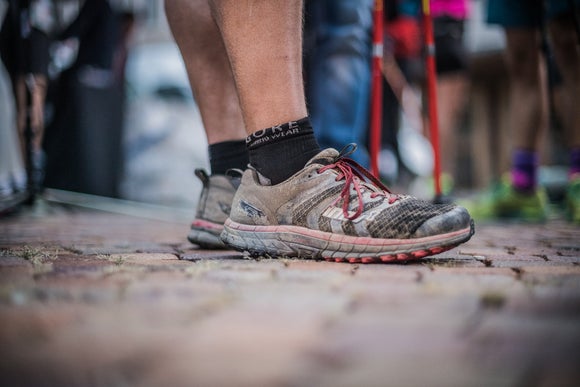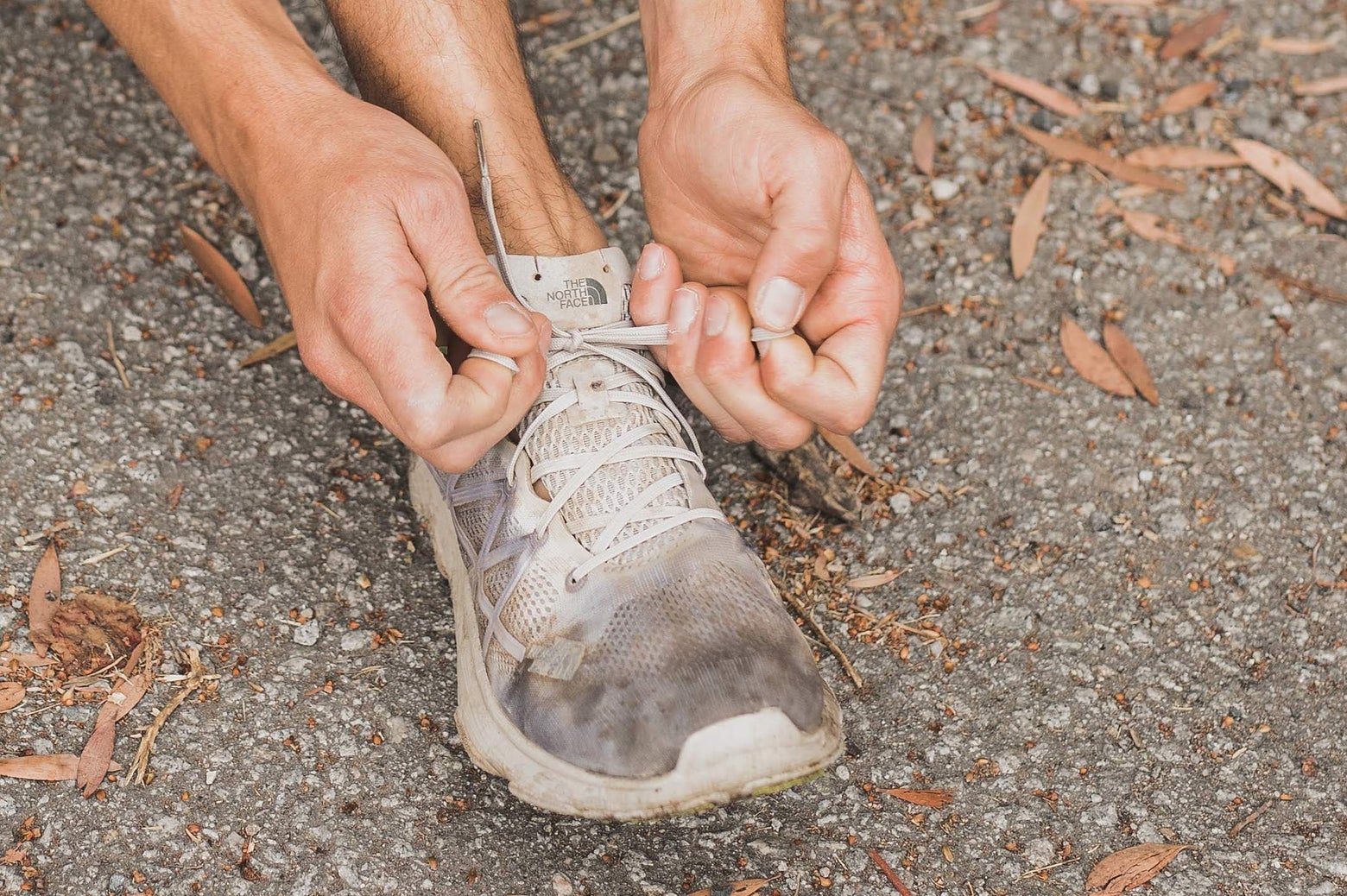How to Clean Your Running Shoes
Updated: 30th April 2024

There's nothing like slipping into a new pair of spotless clean shoes, but whether you're hitting the road, the trails, or the gym, your shoes are bound to eventually get dirty. Muddy, dusty, or wet running shoes can be a badge of honour, advertising the fact that you aren't letting nature slow you down. But while dirt may offer a sense of pride, running shoes are not cheap, and a little bit of cleaning will go a long way in extending the amount of use you can get out of your shoes. To help you achieve the shoe's maximum lifespan and ensure the integrity of the shoe components, take care of your shoes by properly washing and drying them. Read our step-by-step guide below on how to clean your running shoes to extend your shoe's life cycle.
What You Need to Clean Your Shoes
• A free-standing bucket for cleaning and rinsing the shoes
• A bristled scrub, toothbrush, or sponge
• A mild cleaning solution such as dish soap (mild laundry detergent, baking soda, or vinegar optional)
• Clean water for rinsing
• Soft microfibre towel for drying (newspaper, coffee filter, paper towel, or tissue paper optional)
• Mesh bag (optional)
1. Scrub the Fabric on Top
First things first, never use a washing machine to clean your shoes, as the heat and detergents can be harmful to the glue holding different parts together. Instead, spot-clean your shoes. Begin by making a mild cleaning solution using soap and water. Gently clean the dirty upper of the shoe with a soft brush, and then rinse your shoes with clean water.
While cleaning the upper of the shoe, you can also give some care and attention to the liners. The insoles and liners of your shoes can harbour unpleasant odours and bacteria, so it's important to clean them regularly to avoid harsh smells. Remove the insoles/liners and clean them separately using a gentle brush, sponge, or washcloth with mild laundry detergent or soap. Then, leave them to air dry (more on this below).
You can also remove the shoelaces and wash them separately for a more thorough cleaning. Place the laces in a mesh laundry bag and wash them on a gentle cycle. If they are beyond saving, check out our replacement laces.
2. Clean the Bottom and Sides
Once the upper is cleaned, it's time to move on to the midsole and outsole of the shoe. As mentioned earlier, washing your shoes in the washing machine will prematurely break them down and cause damage. Therefore, we recommend using a mild cleaner with a cloth or brush to clean the midsole and outsole if they are particularly dirty or muddy. Dish soap is a good option, and a mild all-purpose cleaner also does the trick.
When cleaning the outsole, you can use a brush with stiff bristles or a toothbrush to clean every nook and cranny. For stubborn dirt, rinse with a hose, then scrub any remaining residue in the outsole. To prevent compromising the traction of your shoes, especially for trail shoes with more pronounced lugs, thoroughly remove any build-up from accumulated debris underneath.
3. Dry Your Shoes
The best way to dry your wet running shoes is to let them air-dry or place them in front of a fan. Resist the temptation to dry your shoes using heat. Placing your running shoes in an automatic dryer (even on low heat) or in front of a warm heater vent will cause permanent damage to the glue and the foam cushioning, and it's one of the fastest ways to wear out your shoes. Also, avoid leaving your shoes under the sun, which can change the fit of the upper and alter the comfort and cushioning of the midsole.
You can use a dry microfibre towel to gently blot any excess moisture (avoid rubbing the material, which can wear down the fabric). If your shoes are particularly sopping, you can help speed up the drying process by removing the sock liner and stuffing a few sheets of crumpled newspaper into the shoe to absorb some of the excess moisture. If you don't have any newspaper lying around, tissue paper, paper towels, and coffee filters should work just as well.
Be patient; it may take several hours for the shoes to dry completely. Once dry, you can reinsert the insoles and laces.
At the end of the day, while your running shoes aren't going to last forever, making sure they stay clean and dry will at least help them last their intended lifetime.



